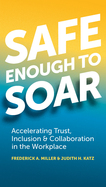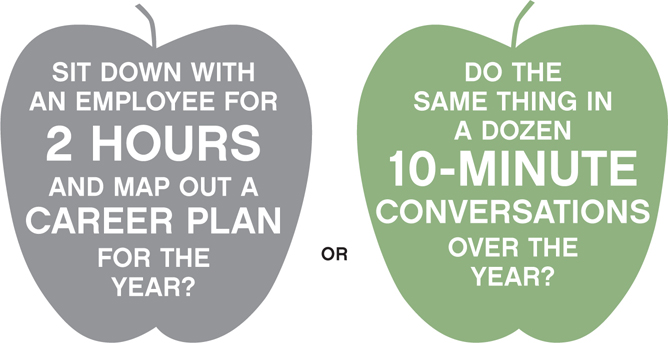
Rights Information
Safe Enough to Soar
Accelerating Trust, Inclusion, & Collaboration in the Workplace
Frederick Miller (Author) | Judith Katz (Author)
Publication date: 11/06/2018
Interaction safety encourages reasonable risk-taking and inspires every individual to be brave enough to reach for higher goals and more ambitious possibilities. When interaction safety exists, people know they will not be penalized, ostracized, demoted, made small, discounted, or shunned because of their thoughts, contributions, and conversations. Individuals feel encouraged, empowered, and can achieve more together than they would alone.
Miller and Katz provide a four-level model for assessing and increasing the interaction safety in organizations, illustrated by short scenarios taken from real-life situations. They offer concrete actions team members, leaders, and organizations can take to build and maintain a productive, collaborative, and innovative environment in which people do their best work individually and collectively.
When interaction safety is a way of life, the energy people used to spend walking on eggshells, trying to get their ideas heard, navigating minefields, or avoiding those they distrust can instead be put towards doing their best work and winning bigger for the organization. With a culture of openness and true collaboration, both the organization and individuals can soar!
Find out more about our Bulk Buyer Program
- 10-49: 20% discount
- 50-99: 35% discount
- 100-999: 38% discount
- 1000-1999: 40% discount
- 2000+ Contact Leslie Davis ( ldavis@bkpub.com )
Interaction safety encourages reasonable risk-taking and inspires every individual to be brave enough to reach for higher goals and more ambitious possibilities. When interaction safety exists, people know they will not be penalized, ostracized, demoted, made small, discounted, or shunned because of their thoughts, contributions, and conversations. Individuals feel encouraged, empowered, and can achieve more together than they would alone.
Miller and Katz provide a four-level model for assessing and increasing the interaction safety in organizations, illustrated by short scenarios taken from real-life situations. They offer concrete actions team members, leaders, and organizations can take to build and maintain a productive, collaborative, and innovative environment in which people do their best work individually and collectively.
When interaction safety is a way of life, the energy people used to spend walking on eggshells, trying to get their ideas heard, navigating minefields, or avoiding those they distrust can instead be put towards doing their best work and winning bigger for the organization. With a culture of openness and true collaboration, both the organization and individuals can soar!
Frederick A. Miller is the CEO of The Kaleel Jamison Consulting Group, Inc. In his 30-plus years of experience, he has developed and implemented strategies that increase engagement, team and individual performance and culture alignment with organizations’ marketplace needs. Frederick was recognized for his work when he was named one of 40 Pioneers of Diversity by Profiles in Diversity Journal (August/September 2007). He also was noted as one of the forerunners of corporate change in The Age of Heretics (Currency Doubleday, 1996, 2008). In 2007, he was honored with the Lifetime Achievement Award from the Organization Development Network. He is the co-author with Judith H. Katz of Be BIG: Step Up, Step Out, Be Bold (Berrett-Koehler, 2008) and The Inclusion Breakthrough: Unleashing the Real Power of Diversity (Berrett-Koehler, 2002). He is managing editor of The Promise of Diversity (Irwin/NTL, 1994).
Fueled by her passion for addressing systemic barriers and known for her boundless energy and sharp analytical mind, Judith Katz brings more than 30 years of experience to her work in strategic culture change.
Her work is an extension of her lifelong commitment to championing fairness, respect for all people and social justice and she was recently recognized for this by Profiles in Diversity Journal, which named her one of 40 Pioneers of Diversity (August/September 2007).
She has consulted with many organizations, including: Allstate, Cisco Systems, Inc.; Dun and Bradstreet; E. I. du Pont de Nemours and Company; Ecolab Inc.; EILEEN FISHER, INC.; Singapore Telecommunications Ltd.; Toyota Motor Sales; and United Airlines.
She joined The Kaleel Jamison Consulting Group, Inc. in 1985 and currently serves as Executive Vice President and Client Brand Lead. She is responsible for ensuring that the Kaleel Jamison brand is delivered consistently across clients.
In 2004, Judith was awarded the DTUI Cultural Competency Award and Voices of Inclusion Medallion ACPA.
She is the co-author with Frederick A. Miller of Be BIG: Step Up, Step Out, Be Bold (Berrett-Koehler, 2008) and The Inclusion Breakthrough: Unleashing the Real Power of Diversity (Berrett-Koehler, 2002). She is co-editor of The Promise of Diversity (Irwin/NTL, 1994) and the author of White Awareness: Handbook for Anti Racism Training (University of Oklahoma Press, 1978, 2003).
—Ken Blanchard, coauthor of The New One Minute Manager and Servant Leadership in Action
“There is nothing more central to a high performing organization than trust in the workplace. Fred and Judith have given us a fantastic hands-on practical process to move any organization, no matter where it sits, toward that goal. Bravo!”
—Jerry Greenfield, cofounder, Ben & Jerry's Ice Cream
“Not only is Safe Enough to Soar a practical road map that can enable any size organization to go from good to great; it is a blueprint to inspire any individual in your organization to sprout creative and collaborative wings and soar!”
—Denise Cerreta, founder, One World Everybody Eats, and 2017 James Beard Humanitarian of the Year
“Through real-life examples grounded in complex concepts, this book walks us through a path to be intentional about every interaction, resulting in teams engaging fully and working together for business breakthroughs. It puts in perspective how our efforts to be truly inclusive can enrich our relationships, interactions, and experiences, both personally and professionally.”
—Rohini Anand, Global Chief Diversity Officer and Senior Vice President,
Corporate Responsibility, Sodexo
“Trust. Inclusion. Collaboration. Beyond buzzwords, Fred and Judith outline a process by which organizations can tap into employees' best efforts and thinking. Safe Enough to Soar is an invitation for everyone to create environments at work that foster real engagement and contribution.”
—Tony Bingham, President and CEO, Association for Talent Development
“The true competitive advantage in today's gig economy and race to incorporate artificial intelligence into corporate business systems is to unleash the full potential of all human assets. Safe Enough to Soar unlocks the key to ineffective team interactions and presents a compelling concept of interaction safety that is the accelerant to effective change management and continuous improvement.”
—Marty Belle, Vice President, Global Talent Acquisition and Inclusion & Diversity, W. W. Grainger, Inc.
“Written with clarity and generosity of spirit, this book is urgently needed to help leaders drive organizational success.”
—Katrina S. Rogers, PhD, President, Fielding Graduate University
“Accept the invitation of Fred and Judith to be safe enough to soar and learn about the journey to create safe interactions and trust in life and your organization. Their latest work reveals how to transform fear to safety and leverage conflict and disagreement into trust, opportunity, and improved organizational performance. This is a must-read for those seeking to tap the talent, knowledge, and commitment of the people in their organizations.”
—James N. Baldwin, JD, EdD, President, Excelsior College
“Through Safe Enough to Soar, we are now provided with direction and the context within which to apply the 4 Keys. The book offers a clear pathway through four levels of interaction safety, helping me visualize a route leading to interaction safety as a way of life.”
—Andrew Van Breugel, General Manager and Operations Director, Salisbury Operations, Australia, Mayne Pharma International Pty. Ltd.
“What a timely time . . . to prod and push us, aspirationally and pragmatically, to consider and to embrace a new level of connecting with each other to benefit individuals and organizations! Your competence and dedication across decades to create safe and powerful interactions for all is much appreciated.”
—Joseph C. High, former Senior Vice President and Chief People Officer, W. W. Grainger, Inc.
“In today's challenging and ever-changing work environments, interaction safety is crucial for individuals and organizations to reach their full potential and soar. Fred and Judith provide a visionary and practical guide for how to achieve it as a way of life.”
—Mary-Frances Winters, founder and CEO, The Winters Group, Inc.
“Interaction safety levels bring to life the courageous journey people are on in society today. As businesses move to Level Four, skyrocketing employee engagement will drive out organizational waste, and businesses will see tremendous growth.”
—Kathy Clements, former Vice President, Lean Six Sigma, Ecolab
“Safe Enough to Soar seamlessly weaves together complex concepts of systems thinking, the business case for culture change, and neuroscience in a simple and engaging yet highly effective format.”
—Deborah Dagit, President, Deb Dagit Diversity, and former Vice President and Chief Diversity Officer, Merck
“Judith and Fred provide what participants, students, and my executive clients all ask for: How do I create enough safety in my workplace to fully engage people and put the tough issues out openly on the table?”
—Robert J. Marshak, PhD, author of Covert Processes at Work
“Typically in government, the workforce is the constant and leadership is viewed by the workforce as temporary. The mentality of ‘I'll still be here after they are gone' is difficult to break through. Political influence is strong and allies are hard to find. Fred and Judith's ability to identify the current state and simply lay out a plan for change provides leadership with a road map to promote cultural change in an environment that is somewhat intolerant of it. Their insight and knowledge gained from a multitude of organizations and experiences provide workplace scenarios applicable to every environment.”
—Monica Kurzejeski, Deputy Mayor, City of Troy, New York
“As a woman business founder and owner, I know firsthand what it means to be able to speak out and speak up. As a business leader, I recognize that creating an environment that supports all individuals to be their best self, contribute fully, and learn openly from others is a model not only for our companies but for our society as well.”
—Lynne Katzmann, founder and CEO, Juniper Communities
“An important new book about an important new understanding of safety in the workplace. Safe Enough to Soar is an easy read that calls out a complex organizational challenge. The author's definition of interaction safety is clear, and the four levels of safety they describe are accessible and understandable. The key to this book is the value it provides to organizations of all types by challenging us all to do better by ourselves, our colleagues, and our workplaces.”
—Steve Humerickhouse, Executive Director, The Forum on Workplace Inclusion
“Miller and Katz have elevated safety as a key condition in creating inclusive cultures in their model of interaction safety. Safety is often in the eyes of the beholder. The four levels of safety described are critical for people to explore, examine, and enact to assess not only how safe they feel but also how they contribute to creating a culture of safety for others. Miller and Katz offer concrete examples to make cultures that are more than safe enough to soar!”
—Ilene Wasserman, PhD, President, ICW Consulting Group
“When we rolled out the 4 Keys to collaboration (from the same authors), we spent a surprising amount of time on the themes that are captured and addressed in this book. I can therefore recommend it for stand-alone initiatives aimed at helping employees speak up, speak out, and be heard, as well as for use before, during, or after deployment of the 4 Keys.”
—Mike Ali, PhD, former CIO, W. W. Grainger, Inc.
“How do we create a great work environment where people feel safe to be fully involved and able to do their best work? Fred and Judith offer a highly engaging, thoughtful, and much-needed way to establish interaction safety so people can offer both their best and still-forming ideas.”
—John Vogelsang, PhD, Editor-in-Chief, OD Practitioner, Organization Development Network, and Director, Michael Harrington Center, Queens College, City University of New York
“Just finished reading the book and wanted to let you know how moved I am by the message and your crystal-clear view of what inclusion can look like when intentionally practiced and authentically experienced.”
—Plácida V. Gallegos, PhD, President, Solfire Consulting LLC
“For leaders, this book provides a much-needed, practical road map for creating a work environment where everyone feels safe to speak up and challenge the status quo. The four levels of interaction safety, enhanced with checklists and relevant examples, demystify the steps toward realizing a culture of candidness, trust, and inclusion.”
—Monica E. Biggs, EdD, independent OD consultant
“If you want to create a work environment that brings out the best in people and fosters collaboration and respect, Safe Enough to Soar is the place to start. The concept of interaction safety is a powerful tool to diagnose and remedy the negative interpersonal dynamics that typically stifle workplaces. Great ideas come out of creative conflict; this book is an illuminating and practical guide to transforming your workplace into an environment where that creativity can be realized.”
—Christopher Ames, PhD, President, The Sage Colleges
“This book will be an essential part of the toolkit for everyone who wants to learn how to make inclusion part of our everyday reality. When all those in organizations take the message of this book to heart and integrate its lessons into their behavior, relationships, and work, we will have gone a long way to achieving the benefits of inclusion.”
—Bernardo M. Ferdman, PhD, Distinguished Professor Emeritus, California School of Professional Psychology; Principal, Ferdman Consulting; and editor of Diversity at Work
“Powerful concepts and building blocks for enhancing engagement and a sense of belonging.”
—Effenus Henderson, Codirector, Institute for Sustainable Diversity and Inclusion
“The journey from Level One to Level Four, is directly linked to creating a distinct competitive advantage via the collective insight of a motivated and fully engaged workforce, . . . which allows individuals to bring all their ideas and concerns, without fear of criticism or critique, unleashing the power of the whole organization.”
—Victor Lusvardi, Market Development Director, The Chemours Company
“Many have decried the tendency for organizations to encourage difficult conversations or robust dialogue without due regard for the lack of interaction safety in those conversations. I have not come across many books that address this topic with such clarity like Fred and Judith have done. I am particularly drawn to their definition that interaction safety includes not only the feelings of safety to share best ideas but their still-in-formation ideas. It is only when we feel free to speak that we can share ideas that are still in formation—where we do not feel judged and have accepted that everyone can be wrong at times. Interaction safety leads to rich dialogue and creative solutions to problems. Excellent addition to the work of creating inclusive workplaces. Well done!”
—Nene Molefi, author and CEO, Mandate Molefi
“Once again, Fred and Judith bring to light a relevant observation on what people in organizations do that prevents us from becoming our best.”
—Randy Wilson, Director, Organizational Development, Pier 1 Imports
“Taking the time to create interactive safety reaps numerous benefits for organizations and allows energies once dedicated to protective measures to be translated to generative and productive outcomes. The four levels of interaction safety are described through a developmental continuum, illustrated through real-life scenarios that readers will find familiar regardless of the professional sector in which one is employed. The definition provided of interaction safety helps the reader understand the behaviors and mindsets necessary for creating a work environment where differences are respected and leveraged and where reasonable risk taking is rewarded.”
—Mark A. Puente, Director of Diversity and Leadership Programs, Association of Research Libraries
“Your observation that a lack of personal interaction safety will lead to self-editing of the very communications that could improve an organization's performance is, at once, simple and elegant.”
—Francis Murdock Pitts, FAIA, FACHA, OAA, Principal, architecture+
“This book takes readers along a journey from a work environment characterized by judgment, blame, and bullying to one of collaboration, learning, engagement, and contribution.”
—Charles Pfeffer, CEO Coach and President, Contextus LLC
“To fully leverage diversity we must foster an environment where people feel safe to show up authentically and give 100% of themselves. Safe Enough to Soar, skillfully outlined four levels of Interaction Safety and provides a pragmatic process that will help move from D&I strategy to activation.”
—Lily C. Prost, Executive Vice President and Chief Human Resources Officer, J. M. Huber Corporation
“What sets Judith and Fred apart as authors is their ability to engage their readers as allies and empower them to make a difference in their organizations.”
—Khamel Abdulai, Director of Training, Excelsior College
“Safe Enough to Soar is a wonderful extension to Fred and Judith's amazing body of work teaching us how to create inclusive environments where people can bring their full selves to their work each day.”
—Rob Guenard, PhD, Senior Director, Biogen
“By creating clear guidelines and pathways for creating safe environments, Fred and Judith have given us a road map for enhancing trust in our relationships and in our organizations and a guidebook for engagement and fulfillment in our daily lives!”
—Howard J. Ross, author of Our Search for Belonging
“For the many individuals who do not feel safe at work—whether they are on the front line or in a leadership role—this book presents a way to name the behaviors and simple methods to work in their organization while maximizing their personal sense of self and interaction safety.”
—Leigh Wilkinson, Program Manager, Project Management Office, State of Maine
“Working in a foreign country, I was very skeptical as to how the principles of Safe Enough to Soar would actually work. As I began to implement the seven steps to creating interaction safety, I was amazed at how quickly my team adopted the practices, and they have become the norm. I can see not only how our meetings have changed but how much faster solutions are agreed upon, pushing the organization to a higher level. I can say, firsthand, this book transcends geographic and cultural boundaries.”
—Cindy Szadokierski, Vice President, Airport Operations, IndiGo
On Your Own
In a Level One organization, there is no awareness of the importance of safe interactions in the workplace. There is no understanding that the quality of people’s interactions with one another might affect the quality of their work experience or their effort, output, and ability to collaborate with one another.
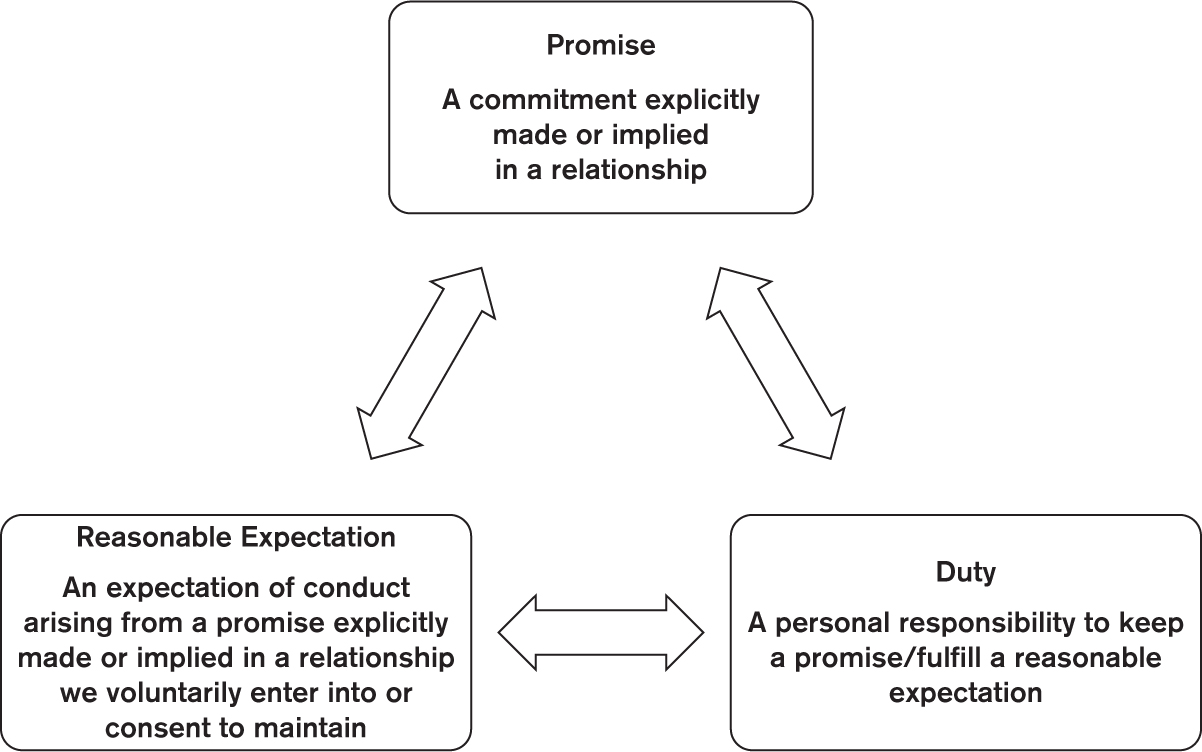
At Level One, there is no focus on interaction safety. People are expected to fend for themselves.
In other words, you’re on your own.
Let’s explore how people interact at Level One.
Compare what happens here with what happens in your workplace. If these things seem normal to you, it is likely that you work in a Level One workplace.
In a Level One workplace, people compete to show their merit and worth. Until they pay their dues and establish themselves in the organizational pecking order, they must constantly prove themselves. New ideas and new people are scrutinized with suspicion.
New people are often ignored, hazed, harassed, or bullied. “Incidents” are ignored, explained away as misunderstandings, or blamed on the newcomer who “hasn’t learned the ropes.”

At Level One, you keep your head down and learn your place.
People judge one another constantly. Some people put down other people’s ideas so they can advance their own. Many others keep their ideas to themselves to avoid criticism. Conversations include sarcasm, put-downs, criticism, mean jokes, and subtle and not-so-subtle digs.
You are expected to give as good as you get. If you can’t, you learn to shut up, keep your head down, and stay out of the way.
If you make a mistake or even a minor slipup, you are judged and not given the benefit of the doubt. You might be dressed down publicly in meetings or email chains.
If you get labeled, the label is likely to stick for a long, long time because people have long memories. Many find it’s easier to just keep their ideas to themselves to avoid criticism.
People who complain about the environment are identified as “whiners.” Whiners are easy targets for increased bullying. They either learn to keep their problems to themselves or leave.

People walk on eggshells.
It’s safer to be small and not stick out.
Safety beyond the physical, life-threatening sense is ignored at all levels: individual, group, and organizational. When the organization signals that raising issues about problems with products or processes—the actual work being done—isn’t okay, people quickly realize that voicing their own feelings regarding interaction safety is dangerous.
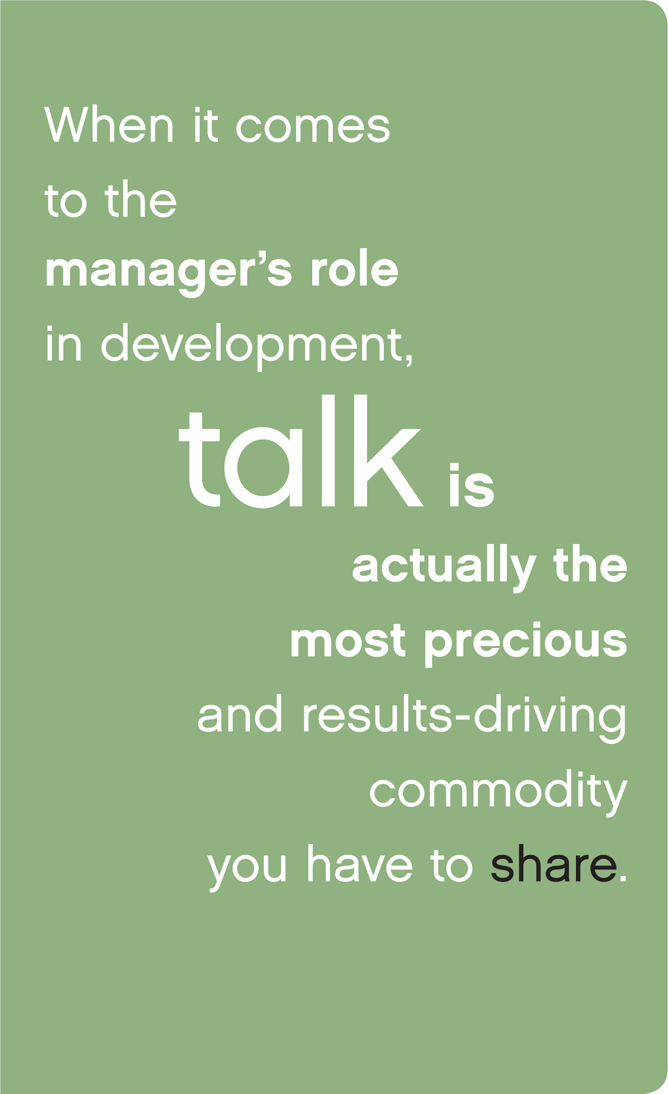
We know better than to be the bearers of bad news because they shoot the messengers.
Speaking up about interaction safety issues regarding team members and managers is taboo. Raising organizational problems of any kind happens mostly in exit interviews . . . or is likely to lead to one.
There is no awareness of the barriers people face that prevent them from expressing their ideas or doing their best work. It is simply not in the organization’s Way of Life.
Leaders see and describe any discussion of interaction safety as “soft stuff” and see it as a waste of time. There is a belief that people should just get on with the work at hand.
Harry is fed up. He’s decided it’s time to talk to his manager. He has come to expect sarcastic remarks in meetings, but after years of putting up with it, he finds his confidence eroding. It isn’t spoken about much, but he can tell that more and more of his colleagues feel the same way. The last time one of Harry’s colleagues spoke up, he got slammed for it. The same has repeatedly happened to others.
Harry has decided he can no longer tolerate this. He knows he has some great ideas to share, but the effort it takes to get a new idea discussed and the reaction he receives are sapping his energy. He feels many of the meetings he participates in are a waste of time. People are not sharing their thoughts because it is just not safe enough. Generally, people only discuss real issues in the “meeting before the meeting” (or after)—not with managers or others they don’t know well, but privately with team members they can trust.
Harry decides to raise his concerns with his manager, with whom he has a good relationship. When he does, his manager responds with appreciation that Harry has shared his concerns, but then he adds, “C’mon Harry, you know how it is around here. Don’t take it personally. That’s just the way it is.”
Harry realizes what his manager has said is true. He decides he is just going to do his job and keep his head down . . . just like the rest of his colleagues.
 People are afraid to speak up.
People are afraid to speak up.
 When it comes to interacting with leaders, people only speak when spoken to.
When it comes to interacting with leaders, people only speak when spoken to.
 Minefields are everywhere, so you tread carefully.
Minefields are everywhere, so you tread carefully.
 If you make a mistake, it is remembered and could be career limiting, even if it is small.
If you make a mistake, it is remembered and could be career limiting, even if it is small.
 People have to look out for themselves.
People have to look out for themselves.
 New people must be quiet and wait their turn.
New people must be quiet and wait their turn.
 When good performers leave, the organization says negative things about them to justify their leaving.
When good performers leave, the organization says negative things about them to justify their leaving.
 There are lots of unwritten rules. If you haven’t been around long enough to know them, it is safest to keep your mouth shut.
There are lots of unwritten rules. If you haven’t been around long enough to know them, it is safest to keep your mouth shut.
 Leaders are not comfortable with people pushing back or bringing their own thinking to the table.
Leaders are not comfortable with people pushing back or bringing their own thinking to the table.
 Jokes, ridicule, and even hazing are common.
Jokes, ridicule, and even hazing are common.
 People don’t give each other the benefit of the doubt—you have to prove yourself continually.
People don’t give each other the benefit of the doubt—you have to prove yourself continually.
 If you complain about someone being disrespectful, you are coached to tough it out and ignore statements that might be demeaning.
If you complain about someone being disrespectful, you are coached to tough it out and ignore statements that might be demeaning.
 If a particular leader seems to punish, bully, or judge team members, people will say, “That’s just the way she/he is,” or position it as a virtue. The leader is “demanding” or “has high standards.” They might suggest you transfer out of that leader’s area as others have done.
If a particular leader seems to punish, bully, or judge team members, people will say, “That’s just the way she/he is,” or position it as a virtue. The leader is “demanding” or “has high standards.” They might suggest you transfer out of that leader’s area as others have done.
 In meetings, people commonly punch holes in each other’s ideas.
In meetings, people commonly punch holes in each other’s ideas.
 Even when people agree, the agreement starts with, “Yes, but...”
Even when people agree, the agreement starts with, “Yes, but...”
 People are rewarded more for criticism than for critical thinking.
People are rewarded more for criticism than for critical thinking.
 People compete to demonstrate that they are the smartest in the room.
People compete to demonstrate that they are the smartest in the room.
 People walk on eggshells. They worry that any mistake they make will be long remembered.
People walk on eggshells. They worry that any mistake they make will be long remembered.
 People who report incidents are as likely to be blamed for them as the parties they lodge complaints against. All parties involved may be warned about the consequences if the behavior happens again.
People who report incidents are as likely to be blamed for them as the parties they lodge complaints against. All parties involved may be warned about the consequences if the behavior happens again.
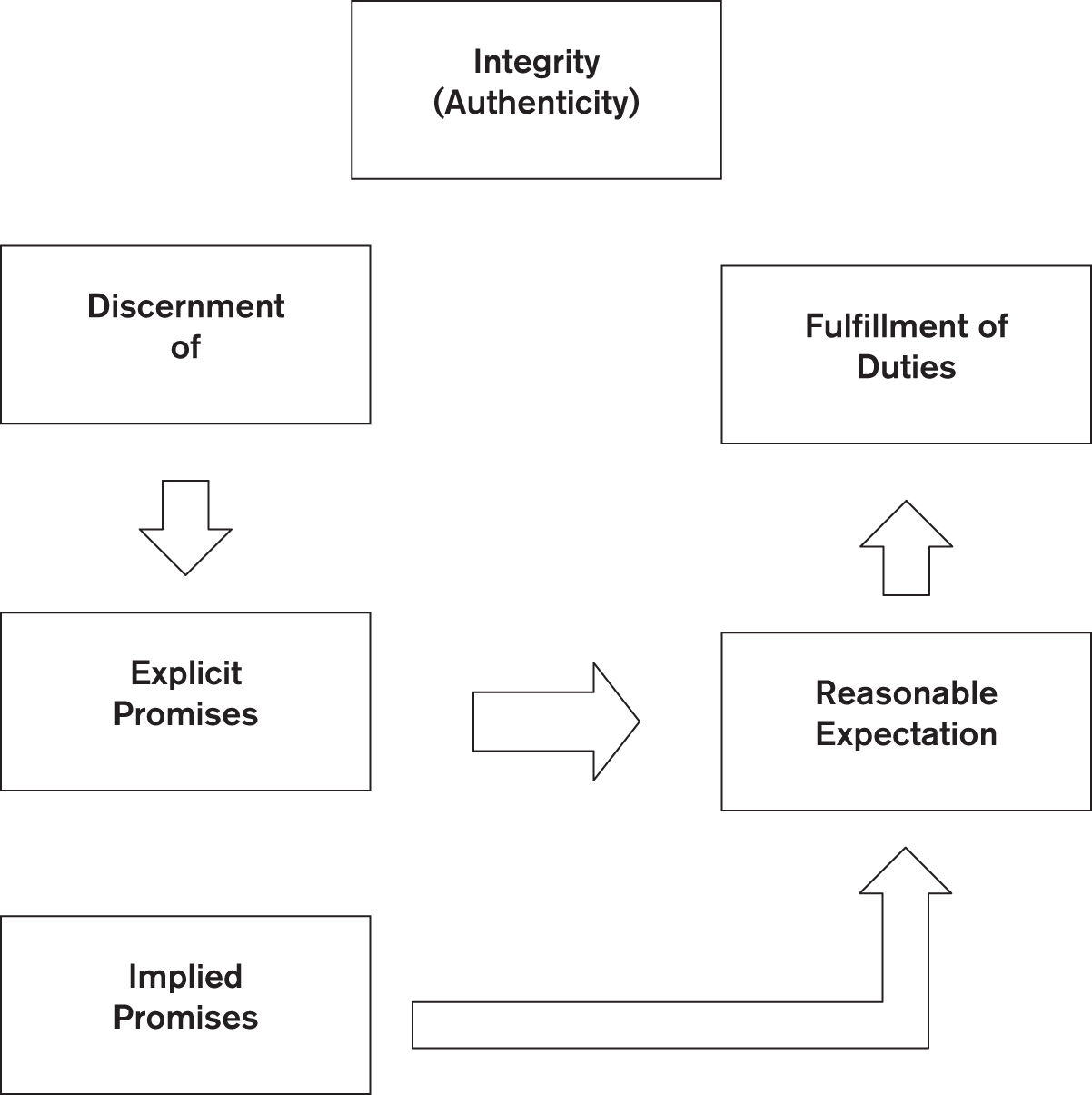

In a Level One organization, new ideas and new people are not often welcomed...
. . . as Pat, a new hire, is learning.
A new hire, Pat, is a highly prized recruit. The company’s hiring staff spent months searching for, recruiting, vetting, and finally hiring Pat. They believe she will bring fresh perspectives and expertise the company sorely needs. The company hopes, based on her track record and their interactions with her, that Pat can make an immediate impact in their sales and customer satisfaction.
In her first weeks on the job, Pat feels her new colleagues are being polite but cautious. She can tell they are keeping her at arm’s length. When she makes a suggestion, her colleagues point out all sorts of flaws in it. They make comments like, “You don’t understand the situation here yet,” and, “We tried something like that before and it didn’t work,” and, “That’s not the way we do things around here.”
Some of her more sympathetic teammates take her aside and coach her to slow down, relax, and “learn how we do things here.”
Pat had been warned that joining the organization could be tough, and she came into the job with her eyes open, excited about this new opportunity, and certain she was strong enough to handle it. She had been in other organizations that were “sink or swim” but was always successful in those environments.
Although Pat was expecting some of this, she is finding herself exhausted each day when she leaves work. Before long, she stops bringing in her new ideas. After six months at the company, Pat is thinking it might be time to update her resume once again. She thinks that if she left, no one would really care.
How We Interact in Meetings: Level One
“Normal” behaviors, interactions, and responses
Written rules and road signs |
There are no statements about the importance of interaction safety. |
When someone is talking |
Keep your head down. |
Interactions with the meeting leader |
It is the leader’s meeting. |
Interactions with other team members |
Only interact with other team members when absolutely necessary. |
When someone challenges an idea |
Go on the attack or avoid interaction. |
Outcome of interactions |
Interactions are passive-aggressive. Time and energy are wasted. There is no trust, inclusion, or collaboration. |

Leaders in Level One organizations are often thought of as “bosses.”
Mary, a senior vice president, is Tony’s boss.
Mary’s team is working on a critical project. The team has been making good progress, but today Tony sent Mary and the other team members an email about a major problem that will delay the project by at least three weeks.
Mary is furious. She fires off an email to Tony—copying the rest of the team—telling him this is unacceptable. Her email starts off, “How could someone with your knowledge let this happen?” The rest of her reply expresses her opinion of Tony’s ineptitude in not foreseeing the problem. After sending the email, Mary feels better for having made her point. She is sure it will keep Tony and the team on their toes.
Tony and the team members have become numb to such outbursts from Mary. This latest outburst reminds them of why they spend so much time working around Mary and hiding problems from her whenever possible.

People who don’t fit the organization’s traditional profile are few and far between.
Akasha often hears she is “different” from how others expected her to be.
Akasha realizes that hardly anyone in the company is treated with respect. At first, she felt she was being treated more harshly because she was one of the few women of color. Now, she sees that many, if not most, people in the company are treated disrespectfully. This realization was somehow almost comforting.
She is aware of the fine line she must walk to be successful. In a recent meeting, Pablo, a facilitator, was called Pancho, which she knew was intended as a derogatory remark. Akasha often hears people in meetings telling jokes about others not in the room. Sometimes she hears colleagues using offensive terms to refer to others. She doesn’t join in, but she feels as if she is colluding by staying silent and watching other people in the room laugh.
She recently heard that a senior leader made a homo-phobic remark at an offsite meeting, and another leader, in front of others, “jokingly” threatened to hit a team member with a bat... and neither leader’s behavior was addressed or even criticized.
Akasha has been told she has a bright future with the company. She works hard to demonstrate her competence every day in order to fit in and make others feel comfortable around her. Yet there are many moments when she feels alone, with few people to talk to about how her differences and experiences affect her daily life in the organization. She is noticing that not only is she withdrawing personally but she is also more hesitant to voice her ideas.
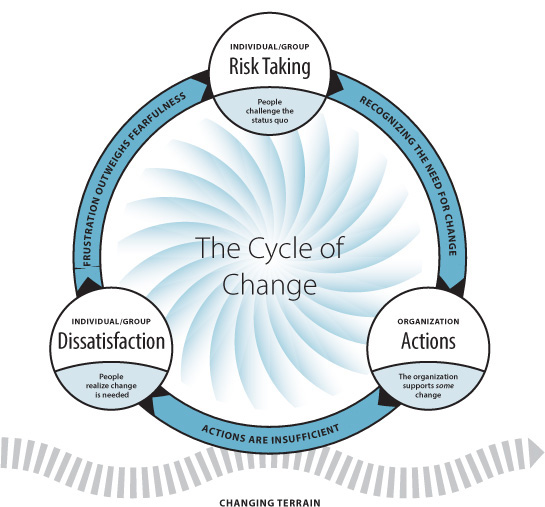
Moving to the Next Level

Roots of Dissatisfaction
Here are some of the signs of dissatisfaction at Level One.
 There is fear of retribution for challenging the status quo.
There is fear of retribution for challenging the status quo.
 A high value is placed on conformity and loyalty to current cultural norms.
A high value is placed on conformity and loyalty to current cultural norms.
 There is an assumption that leaders know best.
There is an assumption that leaders know best.
 An “us versus them” mind-set is prevalent.
An “us versus them” mind-set is prevalent.
 Any difference is seen as a threat.
Any difference is seen as a threat.
 People are punished—put down verbally, sidelined for development opportunities, labeled as troublemakers—if they step outside the current norms. They must fit in.
People are punished—put down verbally, sidelined for development opportunities, labeled as troublemakers—if they step outside the current norms. They must fit in.
 People feel judged.
People feel judged.
 People who raise a problem get labeled as the problem.
People who raise a problem get labeled as the problem.
 In meetings, people have to remain silent and watch as their colleagues are made small or outright attacked.
In meetings, people have to remain silent and watch as their colleagues are made small or outright attacked.
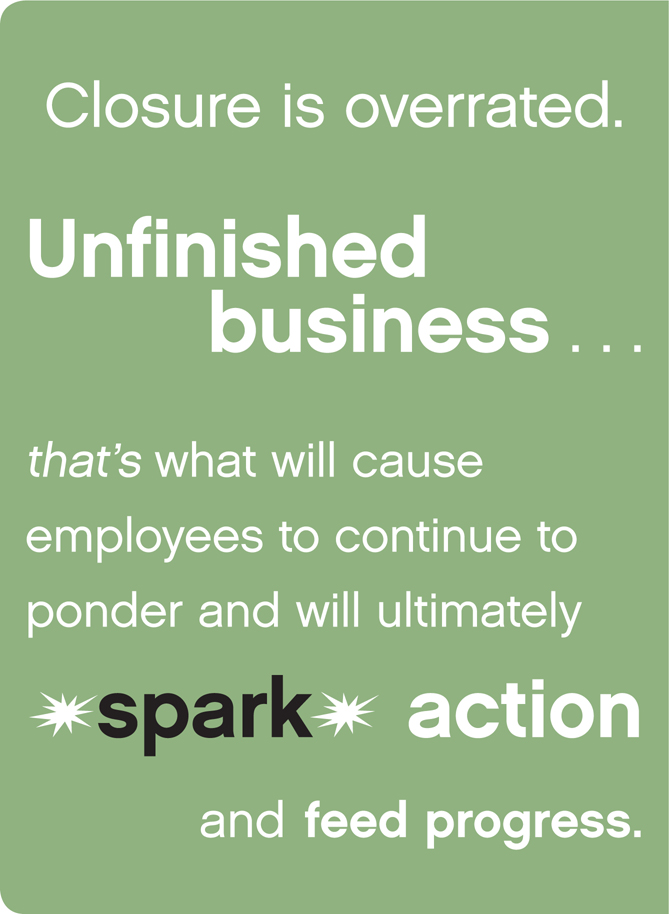
So, what can you do to move to Level Two?
Individual Actions: Taking Risks
 Be willing to let at least one other person know that you are feeling bullied or diminished.
Be willing to let at least one other person know that you are feeling bullied or diminished.
 Engage team members and others you trust about how to create safer interactions.
Engage team members and others you trust about how to create safer interactions.
 End the collusion of silence: Don’t laugh at jokes that put others down. Support others when they are not being treated with respect and are made small (for example, through sarcasm or bullying behavior), even if that support has to be given privately.
End the collusion of silence: Don’t laugh at jokes that put others down. Support others when they are not being treated with respect and are made small (for example, through sarcasm or bullying behavior), even if that support has to be given privately.
 Identify and share what you need to feel safe (for example, letting people know how they can support you or asking someone to have your back when you are not present).
Identify and share what you need to feel safe (for example, letting people know how they can support you or asking someone to have your back when you are not present).
 When an email chain includes name-calling, don’t engage. If you are directly involved, pick up the phone and talk to the individual.
When an email chain includes name-calling, don’t engage. If you are directly involved, pick up the phone and talk to the individual.

Leaders:
Here are some things you can do to make interactions safer for your team members.
Leader and Organization Actions
 Stop accepting an unsafe environment as “normal” or just the way things are.
Stop accepting an unsafe environment as “normal” or just the way things are.
 Let team members know you will not accept sarcasm, put-downs, or judging behavior within your team.
Let team members know you will not accept sarcasm, put-downs, or judging behavior within your team.
 Identify and eliminate your behaviors that may be experienced by others as put-downs.
Identify and eliminate your behaviors that may be experienced by others as put-downs.
 Establish organizational anti-harassment policies.
Establish organizational anti-harassment policies.
 Provide protection for whistle-blowers.
Provide protection for whistle-blowers.
 Track incidents and complaints.
Track incidents and complaints.
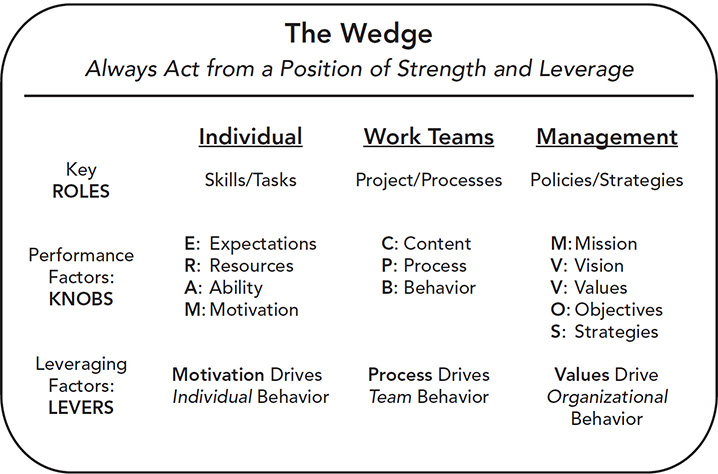
On to Level Two
"What is impressive is not only how Winters builds a case for the urgency and need for bold, inclusive conversations but ...
This practical, accessible, nonjudgmental handbook is the first to help individuals and organizations recognize and preve...
This book is the first practical, hands-on guide that shows how leaders can build psychological safety in their organizat...
"La’Wana Harris has opened this coach’s eyes to the power of coaching practices to create new paths for diversity and inc...


